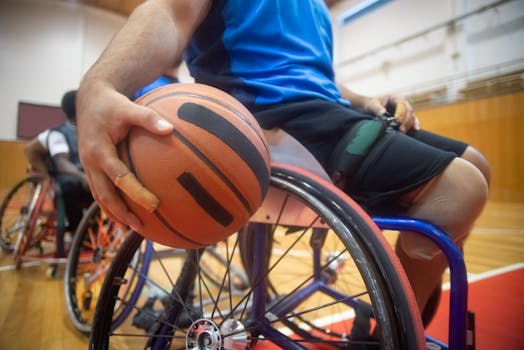Basketball in Schools: The Importance of Basketball in Children’s Physical Education
Basketball is more than just a game; it is a powerful tool for physical education in schools. As one of the most popular sports worldwide, basketball offers numerous benefits that extend beyond physical fitness. This article explores the significance of basketball in children’s physical education, highlighting its impact on physical health, social skills, and academic performance.
The Physical Benefits of Basketball
Engaging in basketball provides children with a comprehensive workout that promotes overall physical health. The sport involves running, jumping, and quick lateral movements, which contribute to cardiovascular fitness and muscle development. Here are some key physical benefits:
- Improved Cardiovascular Health: Basketball is an aerobic activity that helps strengthen the heart and lungs, reducing the risk of heart disease.
- Enhanced Coordination and Agility: The fast-paced nature of the game improves hand-eye coordination and agility, essential skills for various sports and daily activities.
- Weight Management: Regular participation in basketball can help combat childhood obesity by burning calories and promoting a healthy lifestyle.
- Bone Health: The jumping and running involved in basketball contribute to stronger bones, which is crucial during the growth years.
Social Skills Development Through Team Play
Basketball is inherently a team sport, which means that it fosters social interaction and teamwork among children. Participating in basketball helps children develop essential social skills, including:
- Communication: Players must communicate effectively to execute plays and strategies, enhancing their verbal and non-verbal communication skills.
- Teamwork: Working together towards a common goal teaches children the importance of collaboration and mutual support.
- Conflict Resolution: Playing in a team setting often leads to disagreements, providing opportunities for children to learn how to resolve conflicts amicably.
- Leadership Skills: Basketball encourages children to take on leadership roles, whether as a team captain or by motivating teammates during practice and games.
Academic Performance and Basketball
Research has shown a positive correlation between physical activity and academic performance. Engaging in sports like basketball can lead to improved concentration, better grades, and enhanced cognitive function. A study conducted by the University of Illinois found that children who participated in regular physical activity, including basketball, performed better academically than their sedentary peers. The reasons for this include:
- Increased Focus: Physical activity boosts blood flow to the brain, enhancing cognitive abilities and focus during classroom activities.
- Stress Relief: Basketball serves as an outlet for stress, allowing children to release pent-up energy and anxiety, which can improve their overall mental health.
- Time Management Skills: Balancing sports and academics teaches children how to manage their time effectively, a skill that will benefit them throughout their lives.
Case Studies: Successful Basketball Programs in Schools
Several schools across the globe have implemented successful basketball programs that highlight the sport’s benefits. For instance, the Harlem Children’s Zone in New York City integrates basketball into its educational programs, resulting in improved academic performance and social skills among participants. Similarly, the Positive Coaching Alliance has worked with schools to promote a positive sports culture, emphasizing the importance of character development through basketball.
In addition, the NBA’s “Basketball Without Borders” program has reached thousands of children worldwide, using basketball as a means to promote education, health, and social responsibility. These case studies illustrate how basketball can be a catalyst for positive change in children’s lives.
Conclusion: The Lasting Impact of Basketball in Education
In conclusion, basketball plays a vital role in children’s physical education, offering a multitude of benefits that extend beyond the court. From improving physical health and fostering social skills to enhancing academic performance, the sport serves as a comprehensive tool for development. Schools that prioritize basketball in their physical education programs not only promote fitness but also equip children with essential life skills that will serve them well into adulthood. As educators and parents, recognizing the importance of basketball can lead to healthier, more well-rounded children who are prepared to face the challenges of the future.
